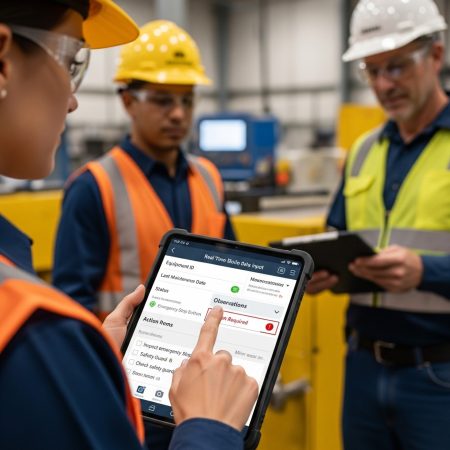Every business wants to keep employees safe, meet compliance rules, and reduce risks. But when inspections are done with paper forms, spreadsheets, and manual reporting, problems often appear. Information may be missed, mistakes can happen during data entry, and managers may not get updates on time. These issues can create safety hazards, slow down operations, and even lead to fines.This is why many companies are now switching to audit and inspection software. By using digital tools instead of manual processes, inspections become faster, more reliable, and easier to track. The software helps organizations reduce risks, prevent errors, and improve workplace safety.
Why Manual Inspections Cause Problems
Old-style inspections that rely on paper and spreadsheets bring several challenges:
Mistakes during recording – Writing notes by hand or typing into spreadsheets often leads to errors.
Missed items on checklists – Important safety checks may be skipped if the list is incomplete or out of date.
Inconsistent results – Different teams may inspect the same process in different ways.
Slow reporting – Managers don’t always see issues quickly because reports take time to prepare.
Weak follow-up – Corrective actions can be forgotten when there is no proper tracking system.
These challenges make it clear why businesses are moving away from manual inspections and looking for digital solutions.
How Audit and Inspection Software Helps
Audit and inspection software gives organizations a simple and structured way to handle inspections. Here’s how it reduces risks and errors:

1. Digital Checklists
Instead of paper forms, inspectors use digital checklists that can be customized for each site or activity. This makes sure nothing is missed during an inspection.
2. Real-Time Data Collection
Inspectors can use tablets or smartphones to record results on the spot. They can also add photos, videos, or digital signatures. This creates instant, accurate records that managers can review right away.
3. Standardized Processes
The software ensures that every team follows the same inspection method. This improves consistency and avoids differences between departments or locations.
4. Centralized Records
Every piece of inspection data is stored in a unified and safe database. Managers no longer need to search through multiple files or spreadsheets. Having one source of truth makes audits and compliance checks much easier.
Cutting Down on Errors with Technology
When tasks are handled manually, small mistakes can easily be overlooked.
No duplicate entries – Data is entered once directly into the system.
Automatic reminders – The software sends alerts when corrective actions are due, so nothing is forgotten.
Clear dashboards – Managers can see patterns, such as repeated issues, and take action before problems grow.
Built-in compliance checks – Many solutions follow international standards like ISO or OSHA, so inspections meet required regulations.
By using these features, organizations reduce errors and improve accountability.
Benefits Beyond Risk Reduction
While the main goal of audit and inspection software is to reduce risks, it also brings wider advantages:
Saves time and costs – Automated reporting reduces paperwork and lets employees focus on higher-value tasks.
Strengthens compliance – Digital records make it easier to prove compliance during inspections or audits.
Improves safety – Problems are identified and fixed faster, reducing the chance of accidents.
Supports better decisions – Real-time insights give leaders the information they need to act quickly and effectively.
Real-World Example
Imagine a manufacturing company that still uses paper checklists. If a machine inspection finds a safety issue, the note may not reach the manager for days. Meanwhile, employees remain at risk.
With audit and inspection software, the inspector can log the issue on a mobile app, attach a photo, and mark it as urgent. The manager is notified right away and quickly delegates the corrective work to the team. This quick response reduces risk, prevents accidents, and builds trust with employees.
Conclusion
For modern businesses, relying only on paper or spreadsheets is no longer enough. Audit and inspection software offers a smarter way to manage safety and compliance.
By using digital checklists, real-time reporting, automated reminders, and centralized records, organizations can cut risks, reduce errors, and create safer operations. Beyond risk reduction, the software also saves time, lowers costs, and gives leaders better insights for decision-making.
For companies that want to protect their people and stay compliant, adopting digital inspection tools is not just a good idea—it is an essential step toward a safer and more successful future.







